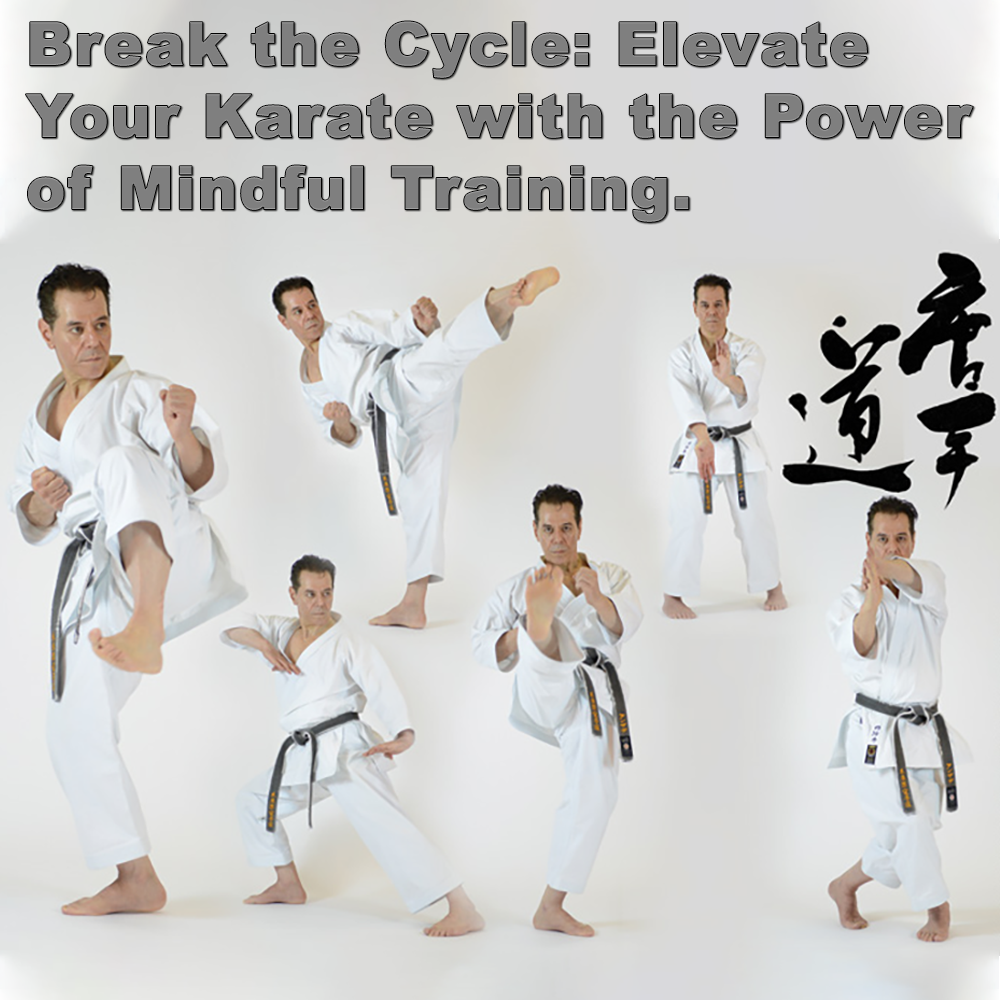
(Approx 2 minute read)
If your mind is full of thoughts and doubts, you are too busy thinking and not able to focus on what you are doing, perhaps unable to practice correctly.
.
I have witnessed students, and instructors, practice their techniques, over and over, one after another, their mind not really in to it, and I think to myself; “good exercise, but not very good karate”.
.
One of the reasons for this is because they aren’t really paying attention to what they are doing.
.
We all know that practitioners should learn techniques and practice them as often as they can. Then after time, hopefully they become second nature – automatic.
.
But unfortunately many practitioners, students and instructors alike, think they “know” how to perform them. So that’s just what they do. They practice them just like they always do….. and with the same errors too.
.
Too often, they perform karate almost mindlessly – not because the movements are automatic, but because they are caught up in the exercise and lose attention to what matters.
.
To truly understand something, you have to pay attention to what, why and how, you are performing it. Making sure it’s practiced as closely as possible to the model given to you by your instructor.
.
In the process of improvement, a teacher might just show you one little thing you can do to improve your performance, perhaps to add speed, balance, power, flexibility, etc.
.
So each time that you perform a technique, examine and guide it with your mind to make it correct. This is especially important as you gain experience.
.
How do you incorporate this into your training?
.
Mindful action.
.
Mindful action is about being grounded, present and aware before we choose our actions. It involves acting out of conscious awareness of specific circumstances, rather than mindlessly following some ingrained pattern of behavior.
.
As an example, when I am performing ‘hojo undo’ (supplemental training), such as a dumbbell biceps curl, I focus entirely on the movement from beginning to end. I engage the muscle at the start of the movement, through the concentric phase, and pause at the contraction of the muscle.
.
I ask myself, “What position is my hand in? Where are my elbows?” Then, I lower slowly through the eccentric phase instead of just allowing the weight to fall.
.
Throughout the exercise I’m focused on what I am doing, mindful of the action being performed.
.
It doesn’t matter whether you are performing a ‘gyaku-zuki,’ a ‘yoko-geri,’ or any other technique. It’s crucial to focus on what you are doing, just as in the example above – from beginning to end. Be aware and know where you are putting your focus. Be fully engaged in the movement or task.
.
Don’t allow your mind to wander. Be present and feel what you are doing. Your techniques will thank you for it.
.
And finally, always keep your mind open to new pieces of information that come your way, the little snippets, the gems. You cannot learn anything deeply if you think that you already know.
.
.
Photo Credit: With thanks to A. Tanzadeh 8th dan Kyoshi Shito-Kai
